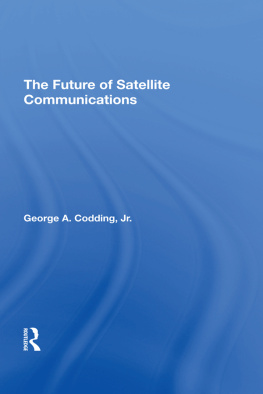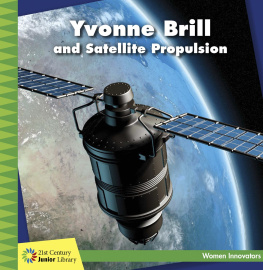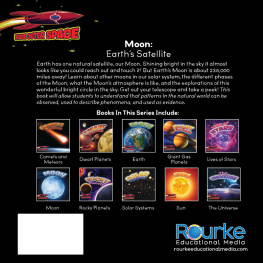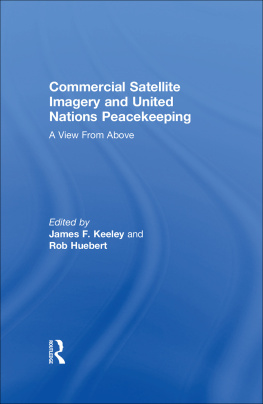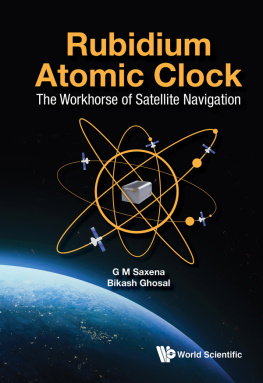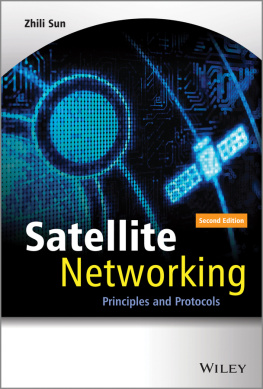First published 1990 by Westview Press
Published 2019 by Routledge
52 Vanderbilt Avenue, New York, NY 10017
2 Park Square, Milton Park, Abingdon, Oxon OX14 4RN
Routledge is an imprint of the Taylor & Francis Group, an informa business
Copyright 1990 Taylor & Francis
All rights reserved. No part of this book may be reprinted or reproduced or utilised in any form or by any electronic, mechanical, or other means, now known or hereafter invented, including photocopying and recording, or in any information storage or retrieval system, without permission in writing from the publishers.
Notice:
Product or corporate names may be trademarks or registered trademarks, and are used only for identification and explanation without intent to infringe.
Library of Congress Cataloging-in-Publication Data
Codding, George A. (George Arthur)
The Future of satellite communications / George A. Codding, Jr.
p. cm. (Westview special studies in science, technology,
and public policy)
Bibliography: p.
Includes index.
1. Artificial satellites in telecommunication.
2. Telecommunication systems. I. Title. II. Series.
TK5104.C58 1990
384.51dc20
90-30618
CIP
ISBN 13: 978-0-367-29236-2 (hbk)
Professor Codding was one of the principal intellectual leaders of a telecommunications policy research project that got under way at the University of Colorado in 1987, supported by a grant from the National Aeronautics and Space Administration. He recommended that we begin our work with review of the present situation and emerging trends in telecommunications so that our policy studies would be well grounded. That was the genesis of this book.
Originally we were mainly interested in satellite communications and the interaction with Integrated Services Digital Networks (ISDNs), which were under development. The coverage has been widened and updated in this volume. In addition this work looks more to the future.
The result is a book that should be broadly useful to all interested in satellite communications. As a spin-off of work originally done for NASA, it represents the kind of fruitful synergism that can result from the application of university talents to practical policy problems.
We are grateful that NASA made the effort possible by funding the original work at the Center for Space and Geosciences Policy.
Radford Byerly, Director
Center for Space and Geosciences Policy
University of Colorado
Boulder, Colorado
* Radford Byerly, Frank Barnes, George Codding, Jefferson Hofgard, NASA and the Challenge of ISDN: The Role of Satellites in an ISDN World , NASA Grant NAGW-1105 (Boulder, CO: May 25, 1989).
Special thanks go to three individuals in the University of Colorado Center for Space and Geosciences Policy: Rad Byerly, Director, who provided unflagging enthusiasm and support; Jeff Hofgard, Rads hard-working assistant; and Darlene Jeune, the Centers constantly cheerful and extremely competent secretary. Professors Frank Barnes and Warren Flock of the CU-Boulder Interdisciplinary Telecommunications Program made special contributions, as did a number of individuals who were students in that Program. Charles Sheridan, one of those students, worked for me for more than a year on research and editing. A great deal of assistance was provided by students David Fahey, Paul Ferris, Marty McClosky, Maria Pardee, and Michael Seebeck. Mention should also be made of the help of Art Rholoff, Richard Andrews, and Josephine Squires, Department of Political Science graduate students. In addition, a note of thanks is due to Joseph Pelton, new Director of the Interdisciplinary Telecommunications Program, who read the manuscript and made a number of excellent suggestions.
George A. Codding, Jr.
Little more than three decades after the first successful launching of an artificial satellite, communication satellites have become the foremost instrumentality of long-distance international communication on a global scale. In 1988, for instance, INTELSAT could claim that its thirteen operational satellites were linking 172 countries, territories and dependencies around the globe via 1,738 full-time earth station-to-earth station pathways (exclusive of transponder leases) among 767 earth station antennas for a variety of voice, video, data, and audio services.
Since the mid-1970s satellites have also become an important element in domestic communications. The United States, USSR, and Canada all have extensive systems of domestic satellite communications, as do Australia, Brazil, France, India, Indonesia, Mexico, and Japan. Other countries, such as the Federal Republic of Germany, Italy, and China have domestic systems in the planning stage. In addition, INTELSAT provides domestic satellite services to another twenty-eight countries, including Algeria, Argentina, Chile, China, Colombia, Cte dIvoire, Denmark, France, Gabon, Germany (FR), India, Italy, Libya, Malaysia, Morocco, Mozambique, New Zealand, Nigeria, Norway, Peru, Saudi Arabia, South Africa, Spain, Sudan, Taiwan, Thailand, Venezuela, and Zaire.
Many new uses for satellite communication, in addition to broadcasting and fixed services, are also becoming available. INMARSAT, for instance, while steadily extending its maritime mobile service, is also inaugurating an aeronautical mobile service and experimenting with a land mobile service. Direct broadcasting by satellite of sound and television directly into the home is slowly becoming a reality, although largely outside the U.S.
Recently, however, advances in telecommunication technology have introduced a major competitor to satellites, the fiber optic cable. Just as special characteristics, including broadcast capability and distance insensitivity, allowed satellites to compete successfully with earlier methods of long-distance communication, such as standard radio and the older underseas cable, fiber optic cable threatens to become a strong competitor on many of the long-distance communication routes currently being served by satellites. Two optical fiber cables have been installed in the Atlantic to serve the lucrative U.S.-to-Europe route. One fiber optic cable now connects the U.S. with various Asian nations across the Pacific and another is under active consideration. Additional cables are being planned for the Atlantic, the Pacific, and the Caribbean. A number of countries are also turning to fiber optic cable for their long-distance domestic communication needs.
As a result, the exact role that satellites will play in the provision of long distance communication in the future is under question. The nature and extent of satellite applications will depend on developments in communications satellite technology as well as developments in fiber optic cable technology. The role will also be determined in part by the evolution of the cost structure involved in the utilization of the two methods of communication in response to technological advances.
The future role of satellite communications will be impacted by variables in addition to technology or economics, however, not the least important of which involves considerations of public policy at both the national and international levels.
In the near future the worlds policy makers will have to answer a number of questions. Is it to the benefit of the individual nations and the world at large for fiber optic cable technology to replace satellite technology, or should regulations, standards, and policies be adopted that will guarantee that both technologies have a place in the overall scheme of things? Are there adequate space resources, especially orbital positions for geostationary communications satellites and the appropriate radio frequencies, for all who wish to use them? How should those resources be allocated? Are there any applications of satellite communication that should be outlawed, or at least regulated to a significant degree?

